Ziaullah Momand
Analyzing Textual Data for Fatality Classification in Afghanistan's Armed Conflicts: A BERT Approach
Oct 12, 2023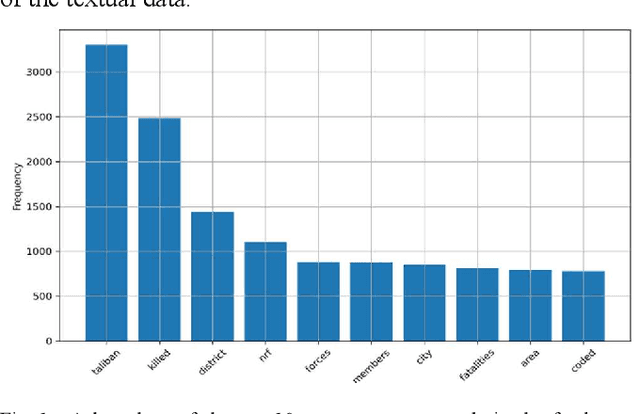
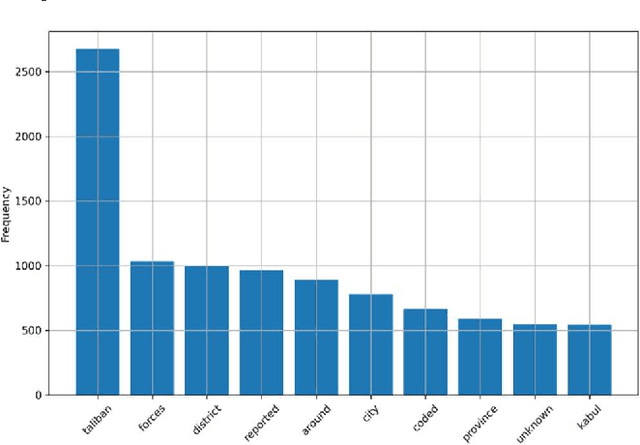
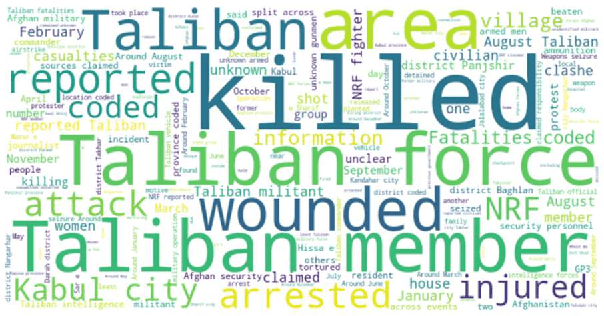
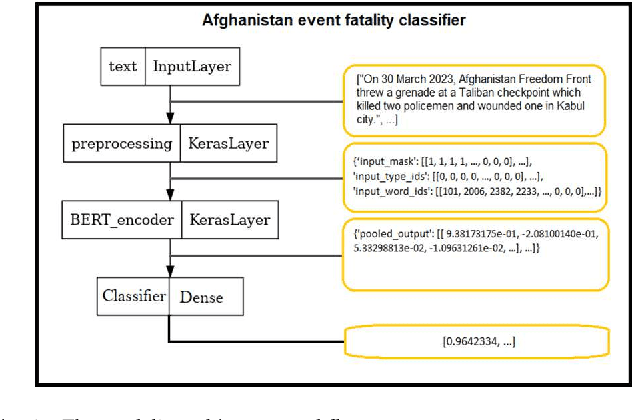
Abstract:Afghanistan has witnessed many armed conflicts throughout history, especially in the past 20 years; these events have had a significant impact on human lives, including military and civilians, with potential fatalities. In this research, we aim to leverage state-of-the-art machine learning techniques to classify the outcomes of Afghanistan armed conflicts to either fatal or non-fatal based on their textual descriptions provided by the Armed Conflict Location & Event Data Project (ACLED) dataset. The dataset contains comprehensive descriptions of armed conflicts in Afghanistan that took place from August 2021 to March 2023. The proposed approach leverages the power of BERT (Bidirectional Encoder Representations from Transformers), a cutting-edge language representation model in natural language processing. The classifier utilizes the raw textual description of an event to estimate the likelihood of the event resulting in a fatality. The model achieved impressive performance on the test set with an accuracy of 98.8%, recall of 98.05%, precision of 99.6%, and an F1 score of 98.82%. These results highlight the model's robustness and indicate its potential impact in various areas such as resource allocation, policymaking, and humanitarian aid efforts in Afghanistan. The model indicates a machine learning-based text classification approach using the ACLED dataset to accurately classify fatality in Afghanistan armed conflicts, achieving robust performance with the BERT model and paving the way for future endeavors in predicting event severity in Afghanistan.
Applications of Machine Learning in Detecting Afghan Fake Banknotes
May 24, 2023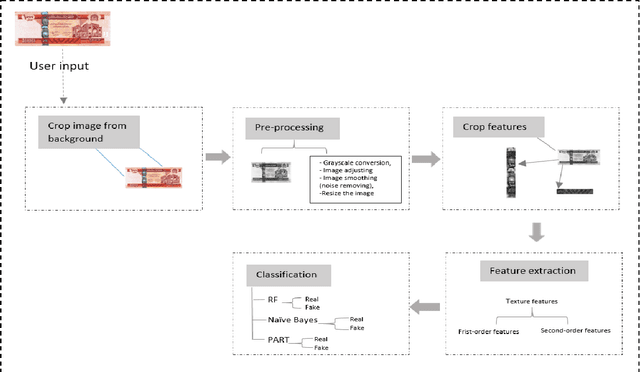
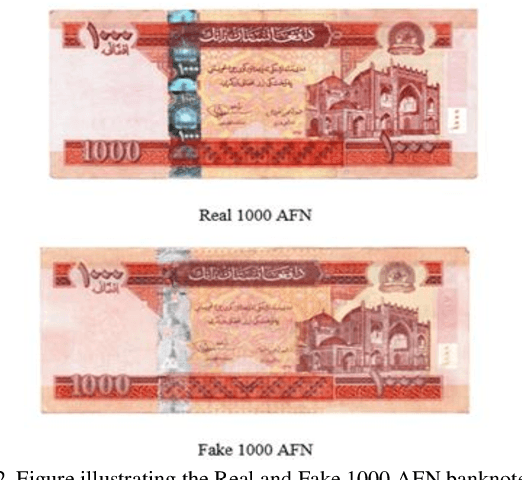
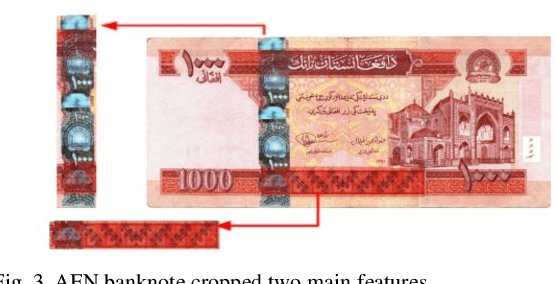
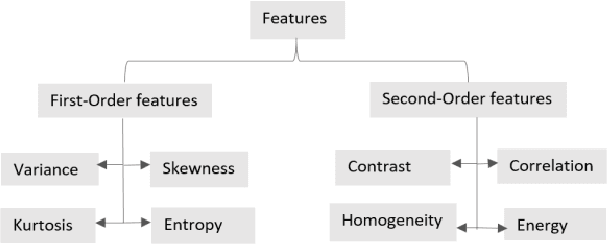
Abstract:Fake currency, unauthorized imitation money lacking government approval, constitutes a form of fraud. Particularly in Afghanistan, the prevalence of fake currency poses significant challenges and detrimentally impacts the economy. While banks and commercial establishments employ authentication machines, the public lacks access to such systems, necessitating a program that can detect counterfeit banknotes accessible to all. This paper introduces a method using image processing to identify counterfeit Afghan banknotes by analyzing specific security features. Extracting first and second order statistical features from input images, the WEKA machine learning tool was employed to construct models and perform classification with Random Forest, PART, and Na\"ive Bayes algorithms. The Random Forest algorithm achieved exceptional accuracy of 99% in detecting fake Afghan banknotes, indicating the efficacy of the proposed method as a solution for identifying counterfeit currency.
A Machine Learning Approach to Detect Dehydration in Afghan Children
May 22, 2023Abstract:Child dehydration is a significant health concern, especially among children under 5 years of age who are more susceptible to diarrhea and vomiting. In Afghanistan, severe diarrhea contributes to child mortality due to dehydration. However, there is no evidence of research exploring the potential of machine learning techniques in diagnosing dehydration in Afghan children under five. To fill this gap, this study leveraged various classifiers such as Random Forest, Multilayer Perceptron, Support Vector Machine, J48, and Logistic Regression to develop a predictive model using a dataset of sick children retrieved from the Afghanistan Demographic and Health Survey (ADHS). The primary objective was to determine the dehydration status of children under 5 years. Among all the classifiers, Random Forest proved to be the most effective, achieving an accuracy of 91.46%, precision of 91%, and AUC of 94%. This model can potentially assist healthcare professionals in promptly and accurately identifying dehydration in under five children, leading to timely interventions, and reducing the risk of severe health complications. Our study demonstrates the potential of machine learning techniques in improving the early diagnosis of dehydration in Afghan children.
 Add to Chrome
Add to Chrome Add to Firefox
Add to Firefox Add to Edge
Add to Edge